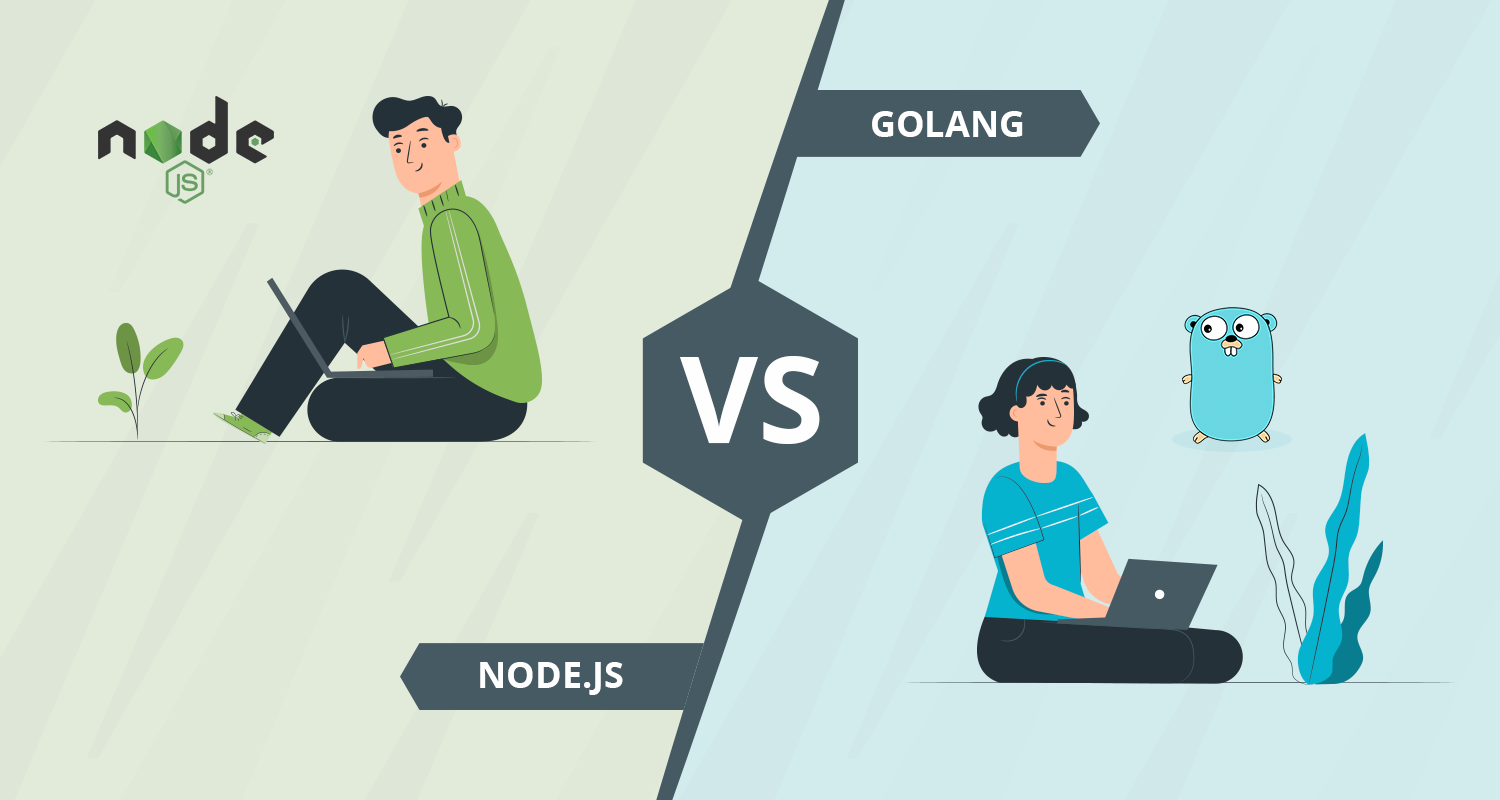NodeJs vs Golang

In recent years, developers have been presented with a greater choice of languages to choose from when creating applications. NodeJs and Golang are both popular programming languages that offer distinct advantages depending on the type of project being developed. This article will explore the similarities and differences between NodeJs and Golang, helping developers to decide which language is best suited to their needs. It will compare both languages in terms of features, performance, scalability, support, and ease of use.
What is Golang?
Golang is a programming language created and maintained by Google. It was designed to make software development simpler and more reliable by concentrating on simplicity, reliability, efficiency, readability, and scalability. Golang is often referred to as “Go” for short.
The language was developed in 2007 with the intention of improving upon existing languages such as C++ and Java while still being easy to learn and use. Since its launch, Golang has become increasingly popular among developers due to its ability to compile code quickly, its strong security features, and low-level control options that help improve application performance. Additionally, it provides garbage collection capabilities which improve memory management for applications running in the cloud or on multiple machines.
If you are an individual interested in Golang, our Golang Training will definitely enhance your career.
What is NodeJs?
NodeJs is a powerful open-source JavaScript runtime environment that enables developers to create server-side and network applications. It is built on the Chrome V8 engine, which allows it to run quickly and efficiently. NodeJs offers an event-driven architecture that helps developers create highly efficient web applications with minimal coding.
Using NodeJs, developers are able to build dynamic websites and web applications that can make use of the latest features available in JavaScript. It also enables them to develop real-time applications with data streaming capabilities, allowing for faster communication between servers and clients without creating any lag or delays. Furthermore, NodeJs provides an easy way for developers to develop cross-platform software using the same language across all platforms. This makes it easier for teams working on different OS platforms to collaborate effectively without having to learn multiple languages.
If you are an individual interested in Node.js, our Node.js Training will definitely enhance your career.
Performance Comparison
NodeJs vs Golang is a comparison of two very popular programming languages used today. NodeJs is an open-source, cross-platform JavaScript run-time environment for executing server-side code written in JavaScript. Golang, on the other hand, is an open-source programming language developed at Google for building modern software. In this article, we will compare both these languages in terms of performance to help you decide which one suits your project needs best.
We start with NodeJs – it has been around since 2009 and works well with asynchronous I/O (input/output) operations as it excels in non-blocking I/O features allowing it to handle multiple requests simultaneously. It also has a large library of available modules that make coding quicker and easier.
Differences: Syntax, Speed, Deployment
Node.js and Golang are two of the most popular programming languages used to create web applications. Both have their own unique syntax, speed, and deployment capabilities that can make or break a project’s success. So what are the differences between NodeJs and Golang?
To begin with, NodeJs is a JavaScript runtime environment based on Chrome’s V8 engine, which has a flexible syntax that allows developers to write code quickly and easily. On the other hand, Golang is an open-source language created by Google with static typing and strong type safety features, which makes it great for creating highly scalable web applications.
When it comes to speed, NodeJs takes advantage of its asynchronous I/O operations to run faster than Golang.
Use Cases
Nodejs and Golang are two of the world’s most popular programming languages. They are both used by developers to create web applications and APIs, and their differences can be confusing for those new to coding. When deciding which language is best for your use case, it is important to understand how each differs and what advantages they bring.
Nodejs offers an asynchronous approach that makes it very efficient in handling requests from multiple clients at once. Its non-blocking I/O model allows data to flow quickly between the server and client, making it ideal for developing real-time applications like chatbots or gaming apps. Nodejs also has a huge library of modules available, making development faster and easier.
Golang focuses more on scalability than speed, allowing apps built with it to grow in complexity without sacrificing performance.
Benefits & Drawbacks
NodeJs and Golang are two of the most popular programming languages on the market, each offering its own unique benefits and drawbacks. NodeJs, an open-source runtime environment based on JavaScript, is used to create fast and scalable network applications. On the other hand, Golang is a statically typed language built by Google that offers increased safety features compared to NodeJs. Understanding both of these languages will help developers decide which one best suits their needs when creating web-based projects.
NodeJs has some great benefits for developers looking for a flexible language with efficient performance in certain areas. It’s easy to use and allows for fast application development due to its event-driven architecture. Additionally, it’s highly extensible and can be used by both frontend and backend developers alike.
In conclusion, NodeJs and Golang are both effective programming languages that offer unique benefits. NodeJs is best suited for applications that require fast execution, while Golang provides excellent support for scalability and concurrency. Furthermore, NodeJs enables developers to quickly and easily create applications with a wide range of libraries, while Golang offers robust support in the form of its strict type system. Ultimately, the decision between these two technologies depends on the requirements of the individual application.










